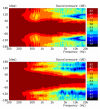Maybe it's semantics, but I think that is completely wrong (at least the way it was phrased). If one were to sum up thousands of pages of research and years of testing into a few sentences, it's the idea that a speaker with flat a on-axis response and smooth directivity will sound "good" or "neutral" and be "preferred" by most people no matter what room you put them in.
A neutral (flat) speaker is indeed going to sound neutral no matter what room you put them in. Dr. Toole did specific tests that verified this. Does it sound the same? No. You can tell you're in a different room. Does it sound like the same speaker in whatever room you're in? Yes. Of course it won't measure flat though. EQ it flat in room and it'll no longer sound neutral. That's the whole reason we do anechoic measurements--the characteristics we measure anechoically will be heard in room.
I'm fully with you on the EQ though--if the directivity is good and you EQ it anechoically, it's going to sound good regardless of what the original frequency response looked like. And if two speakers have extremely similar DI curves and you EQ them to be similar anechoically, they are going to sound very similar in room.


